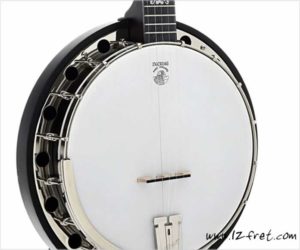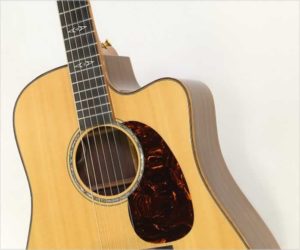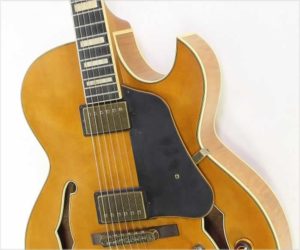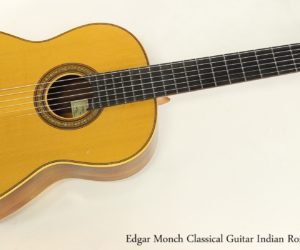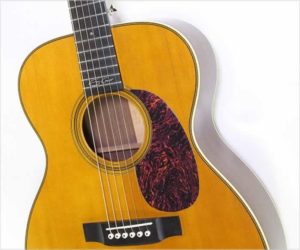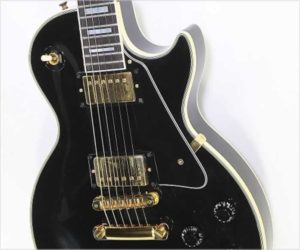This stunning Deering Artisan Goodtime Special Resonator Banjo has the look of an older banjo with the rich brown stain, Deering fiddle shaped peghead and planetary banjo tuners. The Classic Special can be heard with a sweet voice with sustain that compliments all the instruments in a band.
Instruments
Built from 2009 to 2016, the C F Martin DCPA1 Plus starts with a full sized, cutaway dreadnought body. A Sitka Spruce top is paired with Indian Rosewood for the back and sides. The neck is Mahogany, with Ebony used for the bound fingerboard and bridge. The headplate, which carries a vintage-style C F Martin logo in Puau, is acrylic. Puau or Abalone is also used around the soundhole.
This instrument has sold
MORE →The Artcore Expressionist uses a fully hollow body with arched top and back, with a laminated Spruce top (the ES-175 uses laminate maple here) paired with laminated Flame maple for the back and sides. The neck is a 3-piece Maple and Mahogany design with a bound Ebony fingerboard, and block position markers of Acrylic.
This instrument has sold
MORE →This Edgar Monch Classical Guitar was built at his Toronto shop during 1967, numbered as 1967/41. It features a Spruce top paired with Indian Rosewood for the back, sides and headplate; the neck and body blocks are Mahogany and the fingerboard is Ebony. This guitar is over half a century old and has been played as intended.
This instrument has sold
MORE →The C F Martin company based the 000-28EC model on the guitar Eric Clapton leaned on for his 1992 ‘Unplugged’ MTV performance. The C. F. Martin 000-28EC Eric Clapton Signature is a very well balanced guitar, producing wonderful results for fingerstyle and picking. As a ’28’ style guitar, it pairs a Sitka Spruce top with Indian Rosewood for the back, sides and headplate; the neck and body blocks are Mahogany, and the unbound fingerboard and bridge are Ebony. It has ‘Herringbone’ style binding – which would not have been on a 1966 model!
This instrument has sold
MORE →For its initial 1954 appearance, the Gibson Les Paul Custom differed somewhat from the 1952 Les Paul models in a manner not visible to the eye. Under the black finish was a solid Mahogany body with carved top, instead of a carved Maple cap on a mahogany slab. This construction continued for most Les Paul Custom models until 1961, when the line was completely revamped into what we now call the SG. When the original Les Paul design re-emerged in 1968, the Custom received the standard Maple cap.
This instrument has sold
MORE →